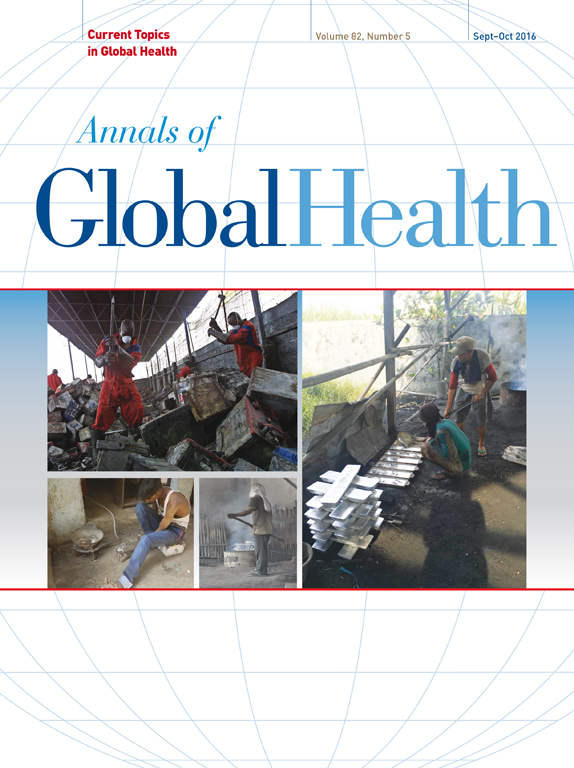The Global Burden of Lead Toxicity Attributable to Informal Used Lead-Acid Battery Sites
DOI:
https://doi.org/10.1016/j.aogh.2016.10.015Keywords:
informal economy, lead poisoning, low- and middle-income countries, soil pollution, disability adjusted life years, recyclingAbstract
Background
Prior calculations of the burden of disease from environmental lead exposure in low- and middle-income countries (LMICs) have not included estimates of the burden from lead-contaminated sites because of a lack of exposure data, resulting in an underestimation of a serious public health problem.
Objective
We used publicly available statistics and detailed site assessment data to model the number of informal used lead-acid battery (ULAB) recyclers and the resulting exposures in 90 LMICs. We estimated blood lead levels (BLLs) using the US Environment Protection Agency’s Integrated Exposure Uptake Biokinetic Model for Lead in Children and Adult Lead Model. Finally, we used data and algorithms generated by the World Health Organization to calculate the number of attributable disability adjusted life years (DALYs).
Results
We estimated that there are 10,599 to 29,241 informal ULAB processing sites where human health is at risk in the 90 countries we reviewed. We further estimated that 6 to 16.8 million people are exposed at these sites and calculate a geometric mean BLL for exposed children (0-4 years of age) of 31.15 μg/dL and a geometric mean BLL for adults of 21.2 μg/dL. We calculated that these exposures resulted in 127,248 to 1,612,476 DALYs in 2013.
Conclusions
Informal ULAB processing is currently causing widespread lead poisoning in LMICs. There is an urgent need to identify and mitigate exposures at existing sites and to develop appropriate policy responses to minimize the creation of new sites.Downloads
Published
Issue
Section
License
Copyright (c) 2017 The Author(s)

This work is licensed under a Creative Commons Attribution 4.0 International License.
Authors who publish with this journal agree to the following terms. If a submission is rejected or withdrawn prior to publication, all rights return to the author(s):
- Authors retain copyright and grant the journal right of first publication with the work simultaneously licensed under a Creative Commons Attribution License that allows others to share the work with an acknowledgement of the work's authorship and initial publication in this journal.
- Authors are able to enter into separate, additional contractual arrangements for the non-exclusive distribution of the journal's published version of the work (e.g., post it to an institutional repository or publish it in a book), with an acknowledgement of its initial publication in this journal.
- Authors are permitted and encouraged to post their work online (e.g., in institutional repositories or on their website) prior to and during the submission process, as it can lead to productive exchanges, as well as earlier and greater citation of published work (See The Effect of Open Access).
Submitting to the journal implicitly confirms that all named authors and rights holders have agreed to the above terms of publication. It is the submitting author's responsibility to ensure all authors and relevant institutional bodies have given their agreement at the point of submission.
Note: some institutions require authors to seek written approval in relation to the terms of publication. Should this be required, authors can request a separate licence agreement document from the editorial team (e.g. authors who are Crown employees).

